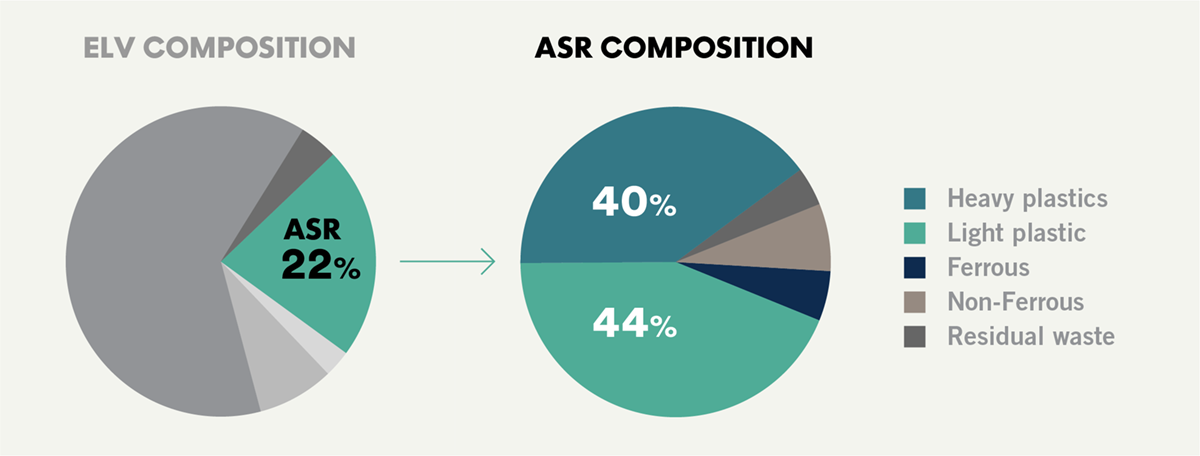Synca: synthetic carbon from Automotive Shredder Residues
The 20-22% of material from End-of-Life Vehicles -ELV is Automotive Shredder Residue -ASR, which contains about 84% of heavy and light plastic and 12% of ferrous and nonferrous metals that can be recycled.
Danieli has developed a competitive, patented route for recycling and valorizing ASR, using its plastics in the form of synthetic carbon as an injected carbon substitute in the EAF.
You can do so by followingand dragging the slider to the right

The Synca process consists of a first grinding and ferrous/nonferrous recovery of the ASR, followed by the treatment of the recovered polymeric fractions split into heavy and light fractions.
Heavy, high-density fractions, which have a high calorific value (about 30 MJ/Kg), are used inside the EAF to produce a stable foaming slag, providing significant savings in electrical energy because the loss of energy due to arc radiation is reduced. Also, CO2 emissions are reduced thanks to the hydrogen content of the polymeric fraction, as CnHm. Synca is a very flexible process, and its product is easily transportable and pneumatically injectable.
Depending on the percentage of Synca used, there will be up to 15% reduction of CO2 emissions otherwise produced by injected carbon, and from 2 to 7 kg saving of metallurgical carbon per ton of liquid steel.
You can do so by followingand dragging the slider to the right
Research tests showed that light plastic fractions should be preferentially treated in a pyrolytic reactor in such a way as to produce liquid fuel and/or gaseous fuel, depending on customer demand. Pyrolysis will be the answer to plastic waste build-up and will result in a remarkable decrease in fossil fuel utilization. This technology will be extensively applied on an industrial basis in the near future.
Danieli provides efficient and reliable plants and equipment for the complete scrap recycling process, from shears to pre-shredders and shredders, grinders, ferrous/nonferrous separation systems, and automation including automated yards.
